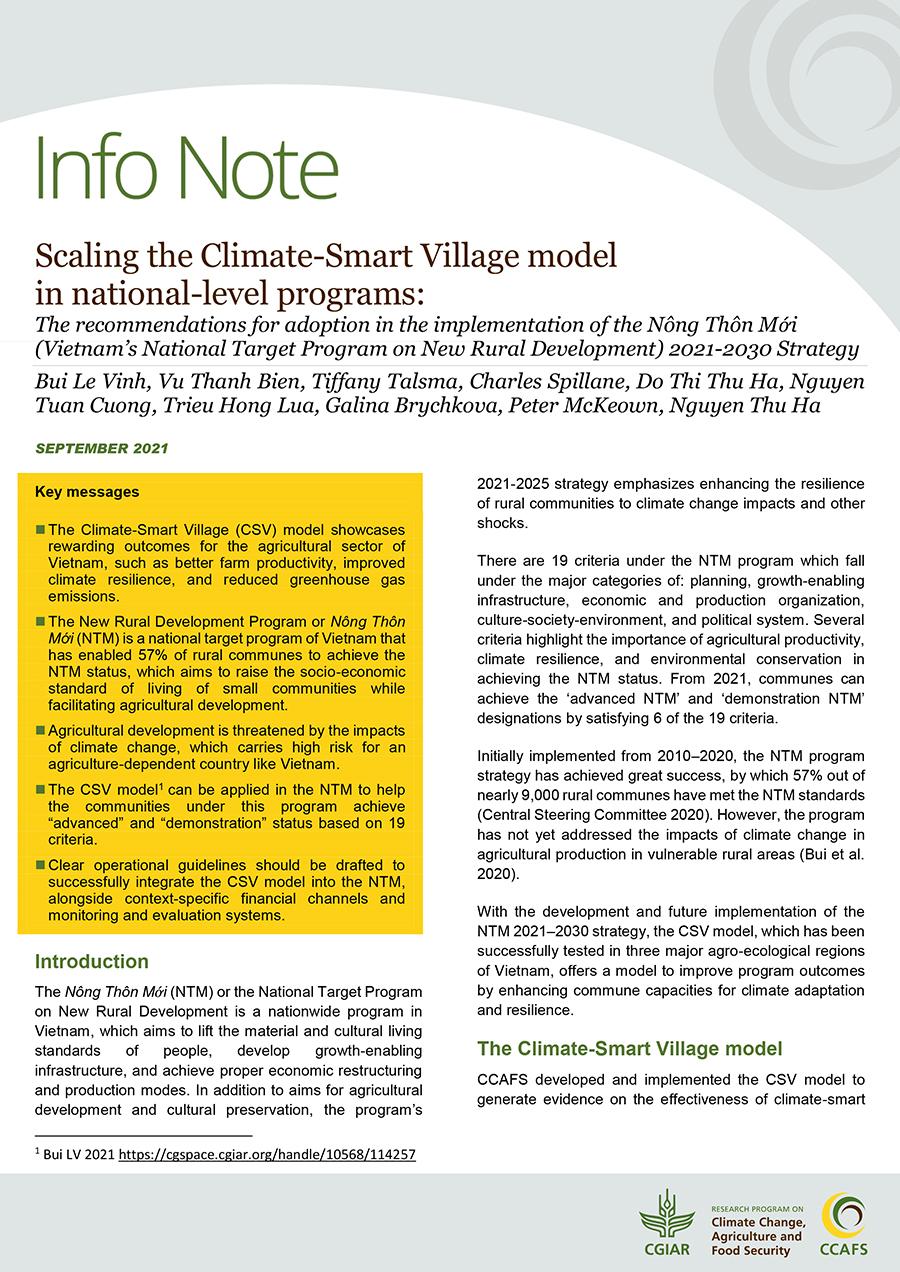To effectively mainstream climate-smart agriculture (CSA), the Climate-Smart Village (CSV) model should be integrated in national-level community development initiatives of the government.
In recent years, Viet Nam is one of the fastest developing countries in the world. To fast-track holistic development up to the community level, the government launched the National Target Program on New Rural Development or Nông Thôn Mới (NTM) in 2010, which aims to raise the socio-economic status of rural communities while facilitating agricultural development.
In the last decade, NTM focused more on uplifting the material and cultural living standards of people, developing growth-enabling infrastructure, and achieving appropriate economic restructuring and production modes. In addition to agricultural development and cultural preservation, the program’s 2021-2025 strategy also emphasizes on enhancing the resilience of rural communities to climate change impacts and other shocks.
The Climate-Smart Village model in Viet Nam
Introduced by The CGIAR Research Program on Climate Change, Agriculture and Food Security Asia in Vietnam in 2015, CSVs were established in the country to serve as a multisectoral platform for testing the technological and institutional options for climate change adaptation and mitigation in agriculture. CCAFS established three CSVs in the country, such as Ma (in Yen Bai province in the North), My Loi (in Ha Tinh province in the Central), and Tra Hat (in Bac Lieu province in the South).
In the CSVs in Viet Nam, several climate-smart agriculture (CSA) technologies and practices were tested and adopted, such as cassava intercropping on sloping lands, orange-based agroforestry systems, black pepper home gardens, vermiculture, ecological engineering, and participatory climate information services, among others. With the successful testing and implementation of CSA, the CSV model has produced significant outputs and outcomes at the local, regional, and national levels.
Integrating CSV in NTM
The CSV model has been recognized by the Ministry of Agriculture and Rural Development (MARD) of Vietnam as a platform for promoting CSA implementation in climate-vulnerable rural communities. This scaling process has also been supported by funding sources overseas, such as the Irish Aid through the Vietnam Ireland Education Exchange Program (VIBE) which is managed by the Embassy of Ireland in Hanoi.
The bottom-up approach of CSV was deemed effective in understanding the current situation of climate risks, the need for change, the receptiveness of communities to undertake on-site response actions, and adaptation.

Click here to read the publication |
In an Info Note based on a study conducted by the Vietnam National University of Agriculture, a set of recommendations on how to integrate the CSV model in NTM was discussed. The study suggested that the CSV model can be mainstreamed into six of the 19 NTM criteria, such as: planning, infrastructural development, information and communications, production organization, culture, and environment.
The researchers also advocated for the adoption of the multi-level coordination and cooperation framework to leverage interactive coordination and cooperation of different administrative government levels in implementing NTM across the country. To achieve the targets and expected outcomes and impacts, the NTM program needs to develop a set of multi-level guidelines for monitoring and evaluating performances of all implementation levels from central to grassroots levels.
To successfully mainstream the CSV model into enhancing adaptive capacity and resilience to climate impacts within the national NTM 2021-2025 Strategy, the Info Note recommends several policy actions, such as developing technical guidelines to implement the CSV model; making financial facilities accessible; and strengthening the coordination and cooperation of relevant stakeholders, among others.
Download the publication: Bui LV, Vu TB, Talsma T, Spillane C, Do TTH, Nguyen TC, Trieu HL, Brychkova G, McKeown P, Nguyen TH. 2021. Scaling the Climate-Smart Village model in national-level programs: The recommendations for adoption in the implementation of the Nông Thôn Mới (Vietnam’s National Target Program on New Rural Development) 2021-2030 Strategy. CCAFS Info Note. Wageningen, the Netherlands: CGIAR Research Program on Climate Change, Agriculture and Food Security (CCAFS).

 Tiếng Việt
Tiếng Việt